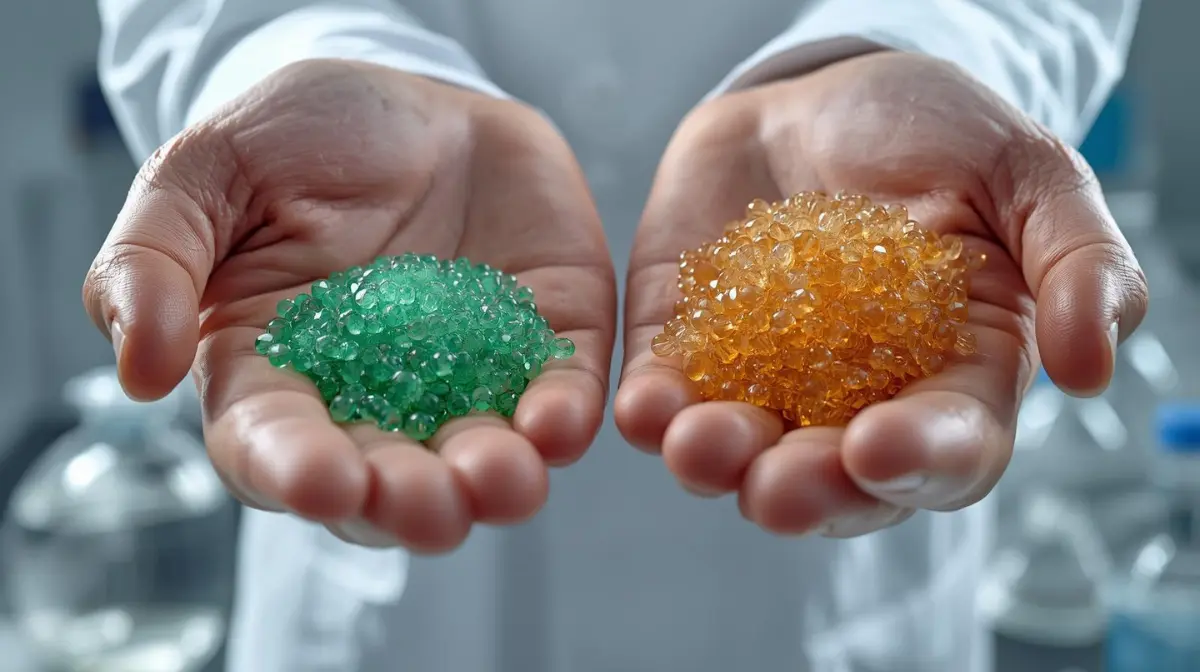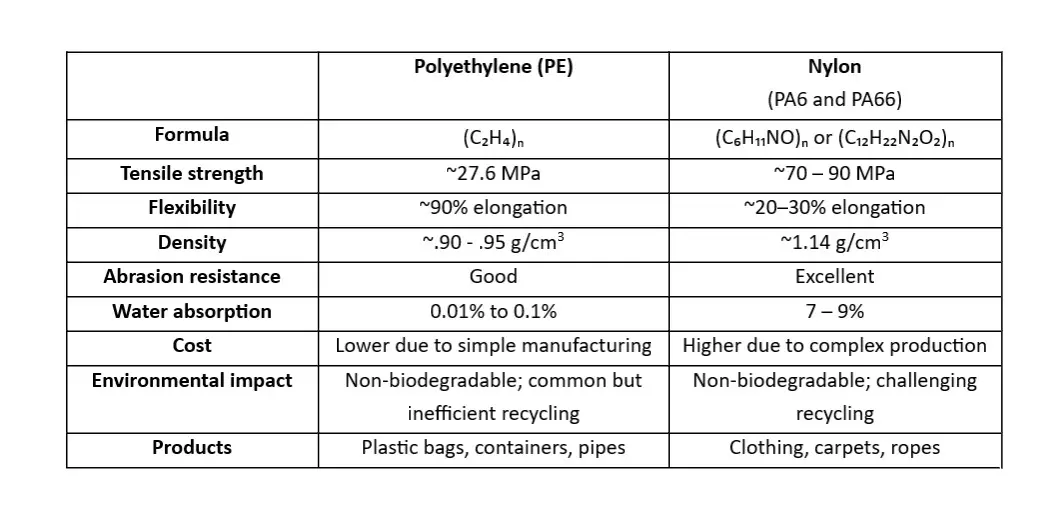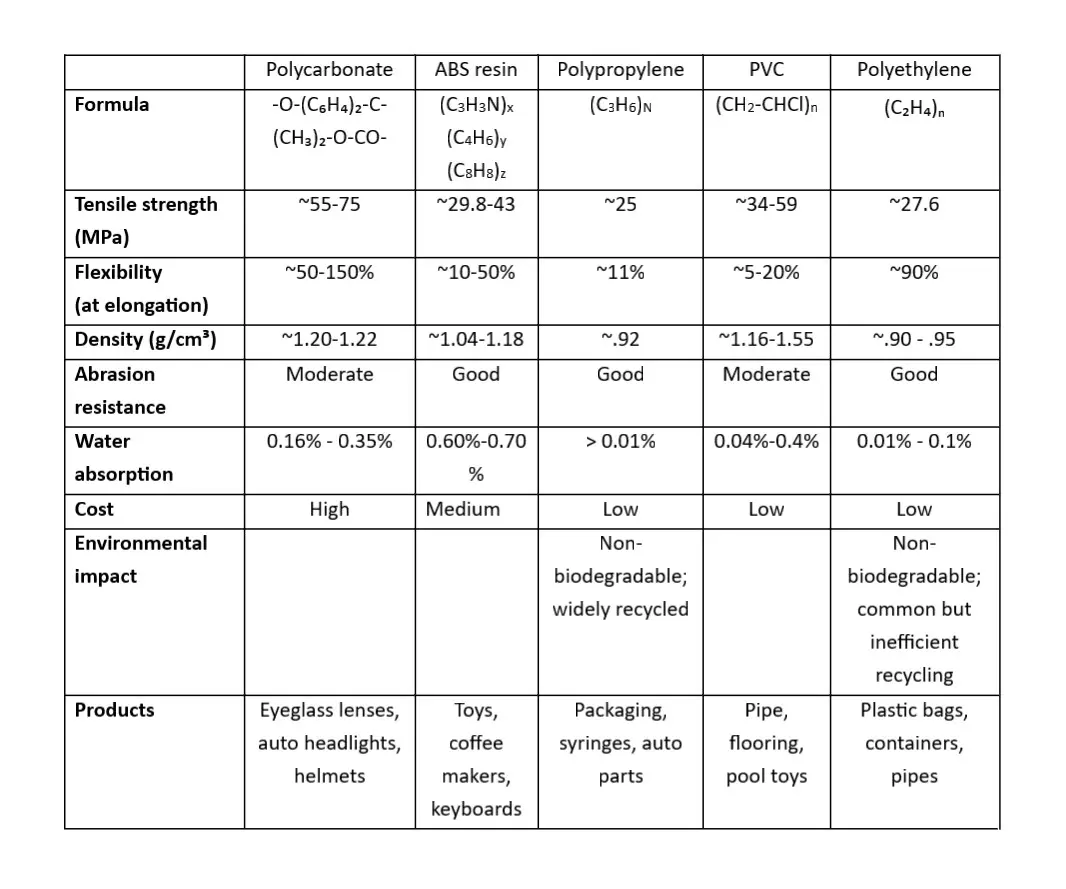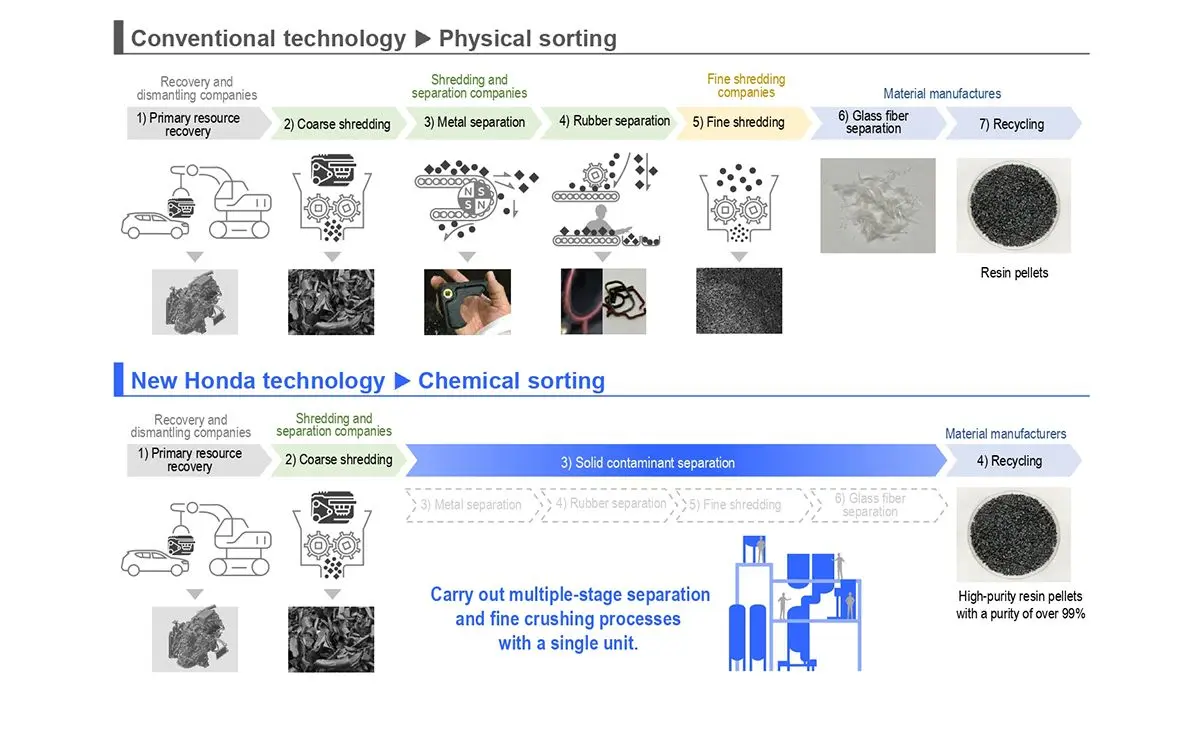With so many types of plastics, it’s easy to get caught up with questions like “What is the difference between PVC vs plastic?” or “When should I choose nylon vs plastic?”
The truth is that selecting the most suitable one can be challenging, and comparing potential materials is a good place to start. As you begin to search, there are a few things you can do to narrow down the choices.
- Confirm product requirements
Research product requirements like strength, operating temperature, functionality (surface hardness, friction and wear, flammability, electrical properties), environmental degradation (heat, temperature and humidity, ultraviolet rays, chemicals) and lifespan. - Review material property tables
Consult a list of materials with mechanical, thermal, chemical and electrical properties. These can be gathered from individual resin manufacturers or by searching PlaBase.com. - Look for similar uses
Selecting from commercially available materials is common unless you’re using something completely new. If they have a track record of being used for similar purposes to the target product, collecting as much information as possible about past usage conditions, product life, practical defects, etc. - Conduct practical testing
If you find a suitable material, move on to the product design stage. If you can’t narrow it down, test candidate materials according to the conditions using prototypes.
The easiest way to make a comparison is by listing features side-by-side, and below, we outline some common comparisons.
Polyethylene vs Nylon
Though both are synthetic polymers, PE and nylon originate from distinct raw materials and follow different processing procedures to maintain their unique properties. Here are some of the features that set them apart:
Sources: Plastic Profiles, Standard Machining, This vs. That, Plastics Technology
Polystyrene vs polypropylene
PS and PP are monomer thermoplastics that use separate polymerization processes. Some of their distinctive characteristics include:
Sources: Plastics Technology, S-POLYTEC, Plastics International
The popularity of polycarbonate (PC)
Thanks to its versatility and widespread use, PC is frequently compared to nearly every plastic material; whether it’s polycarbonate vs polypropylene, polycarbonate vs PVC, polycarbonate vs polyethylene or polycarbonate vs ABS.
Sources: Polymer Search, Plastic Parts USA, Plastics International
Nothing compares to plastics
Considering its range of applications and properties, there is no doubt the versatility of plastic is unmatched. But when it comes to selecting the right material for your next project or product, comparisons are essential to success. By thoroughly evaluating unique properties, you can identify a material that will meet all your performance requirements.









